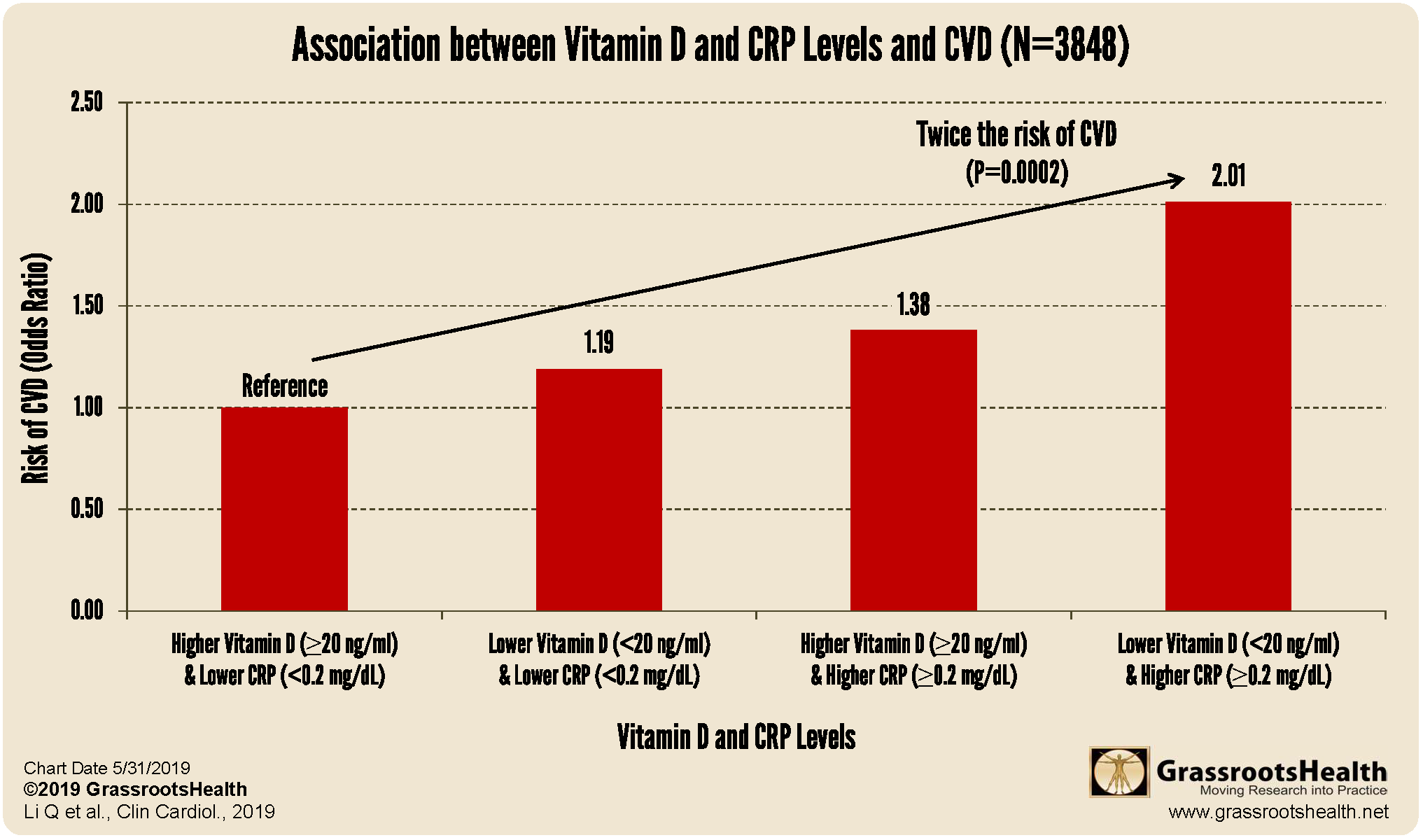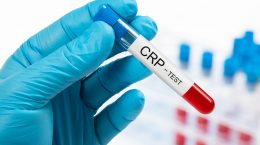Published on June 4, 2019
 Cardiovascular diseases (CVD) are a group of conditions that affect the heart or blood vessels. According to the World Health Organization, close to 18 million people worldwide die each year from CVDs (31% of all deaths) and 85% of those deaths are due to heart attacks and strokes. In April 2019, results from a study assessing the association between C-reactive protein (CRP), a marker of inflammation, and vitamin D levels and CVD were published. This study used data from the National Health and Nutrition Examination Survey (NHANES), which collects health information from a representative sample of individuals living in the United States, where participants reported ever being diagnosed with stroke, heart attack, heart failure, or coronary heart disease by a doctor.
Cardiovascular diseases (CVD) are a group of conditions that affect the heart or blood vessels. According to the World Health Organization, close to 18 million people worldwide die each year from CVDs (31% of all deaths) and 85% of those deaths are due to heart attacks and strokes. In April 2019, results from a study assessing the association between C-reactive protein (CRP), a marker of inflammation, and vitamin D levels and CVD were published. This study used data from the National Health and Nutrition Examination Survey (NHANES), which collects health information from a representative sample of individuals living in the United States, where participants reported ever being diagnosed with stroke, heart attack, heart failure, or coronary heart disease by a doctor.
What were the findings of the study?
Among 3,848 study participants, the researchers found that those with vitamin D levels less than 10 ng/ml (25 nmol/L) had a 90% increased risk of CVD compared to those with levels at or above 30 ng/ml (75 nmol/L) (P=0.03). Also, those with CRP levels at 0.2 mg/dL or higher had a 47% increased risk of CVD compared to those with levels less than 0.2 mg/dL (P=0.003). The chart below shows that when both vitamin D and CRP are considered together, participants with vitamin D levels below 20 ng/ml and CRP levels at or above 0.2 mg/dL had twice the risk of CVD compared to participants with vitamin D levels at or above 20 ng/ml and CRP levels less than 0.2 mg/dL (P=0.0002).
In a separate analysis, when the association between vitamin D and CVD was assessed for those with CRP at or above vs. below 0.2 mg/dL, a significant association was only observed for the higher CRP group. These findings indicate that improving vitamin D status is particularly important in relation to CVD risk for those with higher CRP levels.
Are your vitamin D and CRP levels in the range for reduced risk of cardiovascular disease?
Make sure you know your levels of vitamin D and CRP, and are taking daily steps to keep your D in the target range of 40-60 ng/ml (100-150 nmol/L) and hsCRP levels low. Find out your levels today! Log on to the shop (click the link below) to get your tests and see for yourself if your levels can be improved.
Make sure you track your results before and after, about every 6 months!
How can I track my vitamin D and CRP levels?
To help you track your vitamin D and CRP levels, GrassrootsHealth has created an online tracking system called myData-myAnswers. You can also track many pre-set health outcomes or customize your own to see how your levels impact your health. Check it out today!







